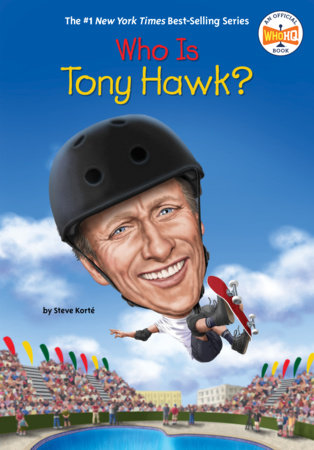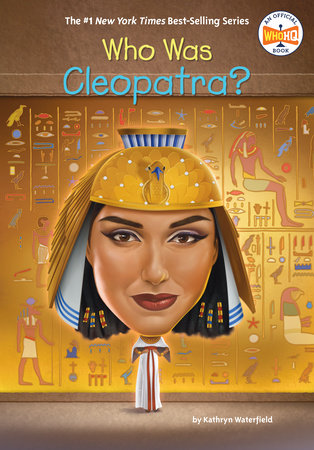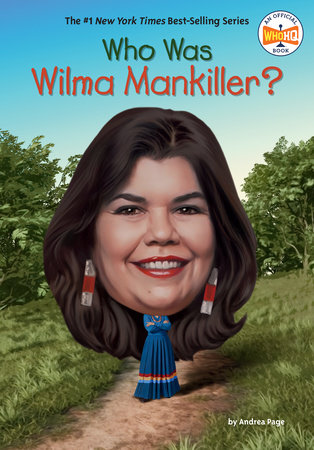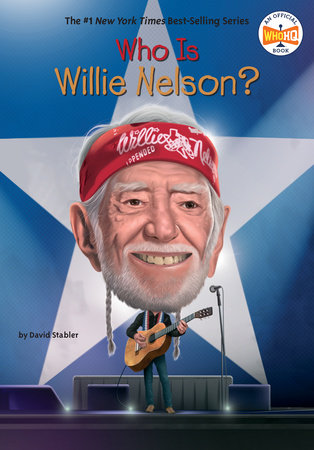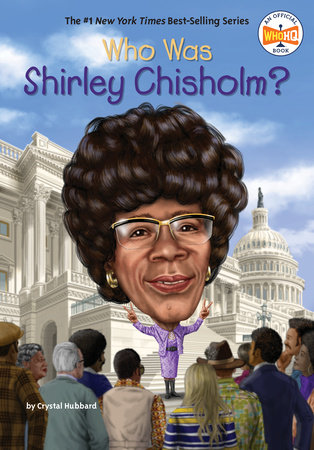Excerpt
Who Is Tony Hawk?
Who Is Tony Hawk? On June 27, 1999, Tony Hawk was standing at the top of a tall ramp in San Francisco, California. A cold wind blew around him as he stared down into the U-shaped vert (short for vertical) ramp. The ramp had been specially designed for skateboarders, allowing them to zoom down and then up each side, building up speed in order to perform dazzling skateboarding tricks in the air.
Tony was participating in the Summer 1999 X Games competition. The ESPN sports channel was going to broadcast the show, and they had invited Tony and four other top vert skaters—Colin McKay, Andy Macdonald, Bucky Lasek, and Bob Burnquist—to skate in a “best trick” competition.
The crowd in the stands was excited. Each skater performed well. Andy Macdonald and Colin McKay did a series of impressive tricks, and it looked like they might win the competition. Then Bucky Lasek did some amazing tricks. Tony Hawk had only minutes left to perform and try to win the contest.
At the time, Tony Hawk was the most famous skateboarder in the world. He was thirty-one years old and had won countless skateboarding competitions. He had invented more than one hundred skateboard tricks that other skaters had tried—and often failed—to duplicate. But there was one trick that Tony had not yet mastered. It was called “the 900,” and it meant flying up into the air on a skateboard and completing an incredible two and a half flips before landing. No skater had ever been known to successfully perform the 900. Tony had injured himself several times in the past trying to do the trick. He had his doubts that it was even possible to land one.
As Tony stood high above the ground, getting ready to skate down the ramp, the crowd in the stadium started chanting, “Tony! Tony! Tony!”
When Tony launched himself off the top of the ramp, his mind was made up. He decided that he was going to be the first person ever to perform and land a perfect 900!
Not only did Tony Hawk complete the difficult and dazzling 900 that day, but he continued to skate and to influence generations of other skaters. During an amazing career that has lasted for decades, Tony became a hero to millions of kids who were learning how to skate. It wasn’t always easy. Over the years, Tony had lots of ups and downs, both in his life and on his boards. But with hard work, determination, and a little luck, Tony Hawk became the first superstar of skateboarding.
CHAPTER 1 Full of Energy Anthony “Tony” Hawk was born on May 12, 1968, in San Diego, California. His parents, Frank and Nancy, were both in their early forties when Tony was born. Tony was the youngest of four children. His two sisters, Pat and Lenore, were already adults living away from home. His brother, Steve, was twelve years old when Tony arrived.
“I was basically an only child,” Tony later said. “My parents were old enough to be my grandparents.”
As a child, Tony was full of energy. In fact, most people thought he had too much energy. He later described himself as an “absolute nightmare” in the way he treated his parents. But his parents made it very clear that they loved him, even though he wasn’t always the best-behaved son. “I’m not proud of my attitude as a child,” Tony said. “Now, I understand that part of my problem was my diet. My parents usually let me eat what I wanted. They had little choice—I would throw a temper tantrum if I didn’t get it.
I ate sugar-coated cereals and ice cream every day. I drank more Coke than water. All the sugar and caffeine cranked me up into a frenzy, and once it mixed with my overachieving determination, I could barely control myself.”
Tony was also very hard on himself and had a strong fear of failing at his many after-school activities, including violin lessons, swimming, baseball, and basketball. He felt that he was disappointing others if he didn’t perform well at everything he tried.
“I had an overactive sense of determination, which exploded whenever I was involved in anything competitive,” Tony recalled. “If I thought I was losing at checkers, I’d flip the board up, spraying checkers all over the room. If somebody had something I wanted, such as a Frisbee, I’d have to have it. If there were three or four people with Frisbees, it wasn’t enough that they shared one with me—I had to have them all! I was a brat of Godzilla proportions.”
Tony got high grades at school, and when he was in the second grade, his parents took him to a psychologist, a person who analyzes behavior. Tests showed that Tony was very intelligent. That put him in the “gifted” category.
Tony said, “The person who administered the test explained that the cause of my frustration was that my brain was constantly telling my body to do things it couldn’t physically do.”
Tony was still so young that he didn’t know how to properly express his irritation and anger. “Because of this, I burned myself out trying to accomplish my goals and was usually disappointed with myself when I didn’t meet them. So I took out my frustration on my family.”
One day when Tony was nine years old, his brother, Steve, was rummaging around in the garage and found his old, dusty skateboard. It was a blue fiberglass (a type of plastic) board made by the Bahne company. Steve handed it to Tony and suggested that he give it a try. Tony stepped into an alley behind their house and hopped on the board. He promptly slammed into a fence at the end of the alley. Steve patiently taught Tony how to stop and how to turn around on the board.
“I had a good time skating that day,” Tony remembered, “but to me it was the same as playing miniature golf or throwing a Frisbee around—fun, but nothing I craved doing nonstop.”
Around this same time, on the other side of the country, a thirteen-year-old boy in Florida named Alan “Ollie” Gelfand was inventing a new skateboarding move. Without using his hands, Alan was able to launch his skateboard into the air by stomping on the back of the board to get it nearly vertical. He then moved his front foot forward to level out the skateboard at the peak of the jump. The trick, created in 1978, became known as the “ollie.”
By the time that Alan had invented the ollie, Tony Hawk decided that skateboarding was kind of fun after all. He began skating a few times a week.
CHAPTER 2 A History of Skateboarding Ever since the invention of the wheel, people have experimented with different ways of using wheels to travel. Both kids and adults have long tried to perfect the idea of having wheels under their feet.
Roller skates—shoes with wheels at the bottom—first appeared in the late 1700s. An inventor from Belgium named John Joseph Merlin is credited with creating the first roller skate in 1760 when he attached two metal wheels each to a pair of boots. One evening, Merlin demonstrated his new invention at a fancy dinner party and crashed into a large mirror. The accident almost killed him, and has gone down in history as perhaps the first fall in the history of skating.
Over the centuries, roller skates evolved into shoes with wheels attached to them—similar in design to ice skates—but the problem with those kind of skates (roller and ice) was that people, especially children, would outgrow the shoes. Eventually, expandable metal clamp-on roller skates were developed that could be attached to a regular pair of shoes.
Roller skates definitely played a role in the creation of the skateboard, but there is another item that was perhaps an even bigger influence. The modern skateboard is a direct descendent of the Hawaiian
papa he’e nalu, which we now call a surfboard.
During the 1930s, surfing became popular around the world, especially in Hawaii and California. When the sea was calm, the surfers wanted another way to re-create the thrill of riding the big waves. The solution was to build a scaled--down version of a surfboard that they could ride on land. Someone came up with the bright idea of taking the wheels from a roller skate and attaching them to a small plank of surfboard--shaped wood. The skateboard was born!
The design of a skateboard is pretty simple. It’s just a narrow board with four wheels attached to its underside. The top part, where a rider puts their feet, is called the deck. There are metal pieces below the deck called trucks, which hold the wheels in place.
In 1958, Roller Derby, a toy manufacturer, released the first mass-produced skateboard, the Little Red. It had steel wheels attached to each end of a plywood board. Skateboarding grew in popularity, starting in California and soon spreading to the rest of the country. Kids were skateboarding on sidewalks, streets, and alleys. Over the next ten years, manufacturers improved the design of skateboards, replacing the steel wheels with clay ones that gave riders greater control on pavement.
During the 1960s, some adults viewed skateboarding with suspicion. Watching a skateboarder zoom by on a sidewalk was frightening to some people. Skateboarders sometimes caused serious injuries to themselves and others. Some communities even made skateboarding illegal!
Skateboarding had already caught kids’ imaginations, though, and its popularity was only growing.
Street Skating vs. Vert Skating The two most common types of skateboarding are street skating and vert skating. Both are very popular.
Street skateboarding, which is sometimes called freestyle skating, is done on roads, benches, curbs, plazas, and other public places. All you need is a skateboard and a flat surface to ride on.
Vert (short for vertical) skateboarding began when skaters rode their boards up and down the curved walls of empty swimming pools. Eventually, people started building bowls—-structures that were similar to the high, curved walls of some pools. Other popular structures for vert skating are ramps and the halfpipe, a half circle that looks like a large pipe cut in half. In 1972, a company called Cadillac Wheels introduced new skateboard wheels that were made of a material called urethane. These new wheels gripped the surface of sidewalks better than clay wheels and created a smoother ride. The boards themselves were also redesigned over the years. Instead of a flat piece of wood, manufacturers made boards out of fiberglass or plastic and added a raised front or a lip in the back. These improvements allowed the riders to create new skating tricks.
Skateboard parks that were filled with ramps and cement bowls soon appeared all across the United States. Skateboard manufacturers began to sponsor skating contests at the parks.
By the late 1970s, when Tony Hawk started experimenting with his brother’s dusty board, skateboarding had become a very big business.


